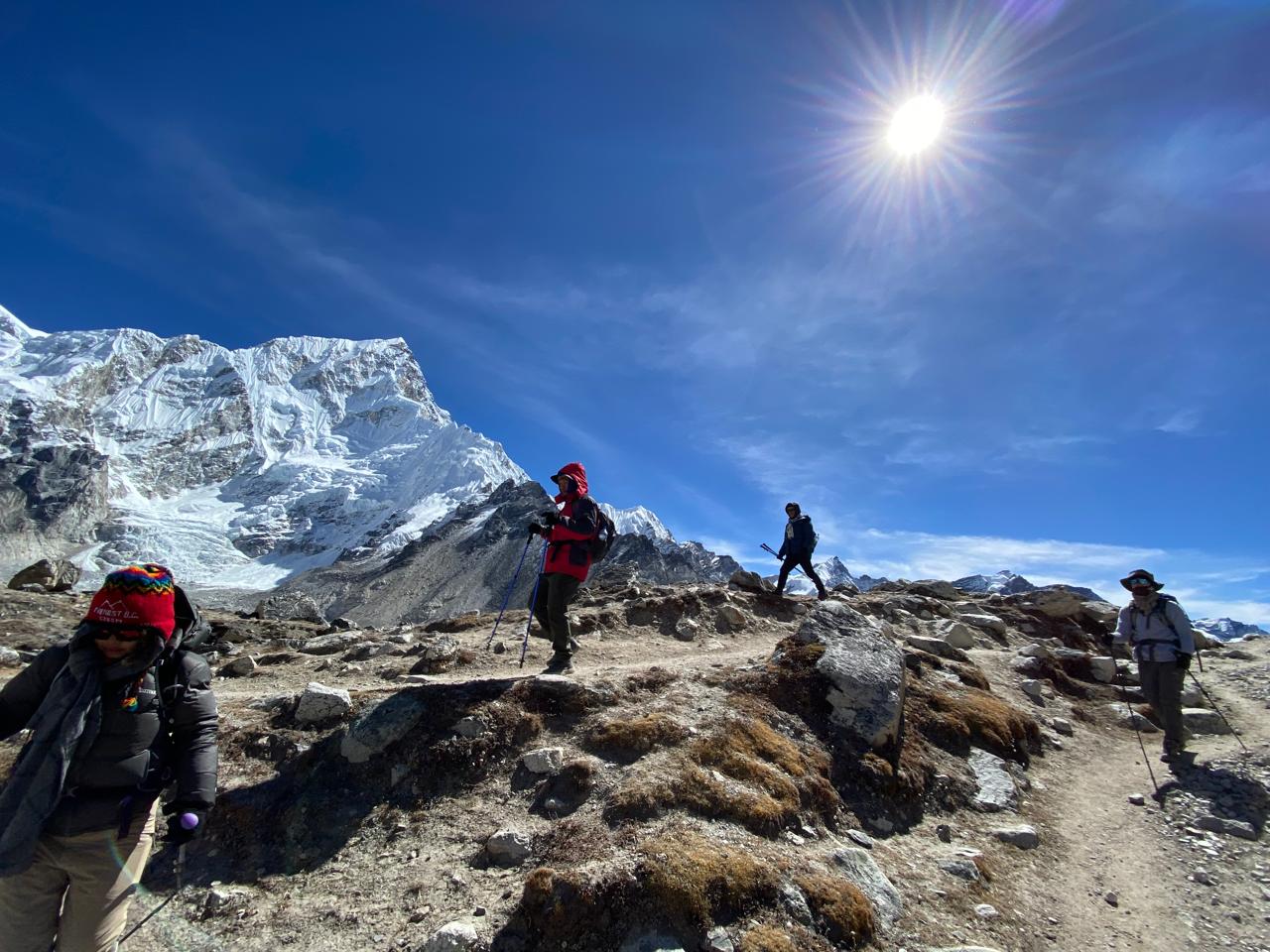Nepal, a small landlocked country nestled between India and China, is a place of incredible diversity, stunning natural beauty, and rich cultural heritage. Despite its size, Nepal has an undeniable charm that captivates the hearts of travelers from all corners of the globe. From the towering peaks of the Himalayas to the vibrant festivals that fill the streets, Nepal offers experiences that are truly unique and special. In this blog, we’ll explore what makes Nepal such an extraordinary destination.
1. The Majestic Himalayas

Nepal is home to some of the most iconic and breathtaking mountains on Earth, making it a dream destination for trekkers and adventurers. The Majestic Himalayas offer a range of trekking routes, each unique in its challenges and beauty. From beginner-friendly treks to challenging multi-day adventures, Nepal’s Himalayas cater to all levels of explorers. The iconic Everest Base Camp Trek, Annapurna Circuit, and Langtang Valley are just a few of the treks that provide an up-close experience with these magnificent mountains. Beyond their sheer size, the Himalayas hold deep spiritual significance for the people of Nepal, and the mountains are revered as the abode of gods and goddesses. Whether you're an avid trekker or simply someone who appreciates natural beauty, the Himalayas are one of Nepal's most awe-inspiring features.
Tour Packages:
-
Everest Base Camp Trek – A classic and world-renowned trek that takes you to the base of the world’s tallest peak, Mount Everest. This 12–14 day trek offers stunning views of Everest, Lhotse, and Ama Dablam, while immersing you in Sherpa culture.
-
Annapurna Base Camp Trek – This moderately difficult trek brings you to the base camp of Annapurna I, offering spectacular views of the Annapurna and Dhaulagiri ranges. The Annapurna Base Camp trek is a shorter, but equally rewarding adventure for those looking to trek through lush forests and alpine meadows.
-
Annapurna Circuit Trek – Known as one of the most beautiful trekking routes in the world, the Annapurna Circuit takes you through diverse landscapes, from subtropical forests to high-altitude deserts. You'll cross the Thorong La Pass at 5,416 meters, offering panoramic views of the Annapurna and Dhaulagiri ranges.
-
Mardi Himal Trek – One of the lesser-known treks in the Annapurna region, the Mardi Himal Trek is perfect for those looking to escape the crowds and enjoy unspoiled natural beauty. This short trek offers stunning views of Mardi Himal, Machapuchare (Fishtail), and the Annapurna range.
-
Ghorepani Poon Hill Trek – Ideal for beginners or those with limited time, the Ghorepani Poon Hill Trek is a short and easy hike that rewards you with one of the best sunrise views over the Himalayas. This trek is famous for its picturesque rhododendron forests and panoramic views of Annapurna and Dhaulagiri.
-
Langtang Trekking – Just north of Kathmandu, the Langtang Valley Trek offers a serene escape into the Himalayas with fewer crowds. The trek takes you through traditional Tamang villages, dense forests, and the stunning Langtang range. It’s a great option for those looking for a peaceful trekking experience.
-
Manaslu Trekking – If you’re looking for a less-traveled and remote adventure, the Manaslu Circuit Trek is a hidden gem. This challenging trek takes you around Mount Manaslu, the eighth-highest mountain in the world, through pristine landscapes and traditional Tibetan villages.
-
Dolpo Trekking – For the ultimate remote adventure, Dolpo Trekking offers an unforgettable experience. This trek takes you into the far western region of Nepal, where ancient Buddhist monasteries, yak caravans, and stunning landscapes of Shey Phoksundo National Park await. It’s a culturally rich trek with few visitors.
-
Other Treks – Treks like the Kanchenjunga Base Camp, Makalu Base Camp, and Upper Mustang Trek also offer unique adventures for those looking to explore lesser-known regions of Nepal. Each of these treks offers breathtaking views, remote landscapes, and a deep cultural experience.
2. Rich Cultural Heritage
Nepal's cultural heritage is as diverse as its landscape. The country is a melting pot of different ethnic groups, languages, and traditions, each contributing to the vibrant tapestry of Nepalese culture. The Kathmandu Valley alone is home to seven UNESCO World Heritage Sites, including ancient temples, palaces, and stupas that date back centuries. The intricately carved woodwork of Bhaktapur, the grand courtyards of Patan, and the towering Swayambhunath Stupa (also known as the Monkey Temple) are just a few examples of Nepal's rich architectural and cultural legacy. Festivals like Dashain, Tihar, and Holi bring the streets alive with color, music, and dance, offering visitors a chance to witness and participate in the local customs and celebrations.
Tour Packages:
Kathmandu Valley Cultural Tour – Explore the cultural heart of Nepal by visiting Kathmandu, Bhaktapur, and Patan. This tour allows you to discover ancient architectural wonders and engage with the spiritual and religious life of the valley.
3. Wildlife and National Parks
Nepal boasts a rich biodiversity and is home to several national parks where visitors can spot rare species such as Bengal tigers, one-horned rhinoceroses, and snow leopards. The dense jungles of Chitwan and Bardia National Parks are ideal for jungle safaris and bird watching.
Tour Packages:
Chitwan Jungle Safari – A 3-day safari tour in Chitwan National Park, where you can explore the diverse wildlife and enjoy activities like elephant rides, canoeing, and bird watching.
4. Spirituality and Pilgrimage
Nepal is the birthplace of Lord Buddha, and the town of Lumbini is one of the most important pilgrimage sites for Buddhists around the world. The country is also a significant center for Hinduism, with sacred sites like Pashupatinath Temple and Muktinath attracting thousands of devotees each year. The blend of Hinduism and Buddhism is evident throughout Nepal, where temples and stupas often coexist, and religious harmony is a way of life. The serene monasteries in the Himalayan region, such as Tengboche and Kopan, offer spiritual retreats for those seeking peace and enlightenment. Whether you're on a spiritual journey or simply curious about Nepal's religious practices, the country's deep spirituality is palpable and adds to its unique allure.
Tour Packages:
Lumbini Pilgrimage Tour – Visit the birthplace of Buddha and explore the peaceful monasteries and stupas in Lumbini. This tour offers spiritual insights and meditative experiences.
5. Warm Hospitality and Friendly People
Nepal is known for its warm hospitality and the friendly nature of its people. The concept of "Atithi Devo Bhava" (Guest is God) is deeply ingrained in the culture, and visitors often find themselves welcomed with open arms and genuine kindness. Whether you're staying in a local homestay in the mountains or a guesthouse in Kathmandu, the people of Nepal go out of their way to make you feel at home. The bond between travelers and locals is often a highlight of any trip to Nepal, and many visitors leave with lasting memories of the friendships they formed along the way.
6. Adventure Capital of the World
Nepal is a haven for adventure enthusiasts. Beyond trekking and mountaineering, the country offers a wide range of adrenaline-pumping activities. White-water rafting on the raging rivers, paragliding over the stunning Pokhara Valley, bungee jumping into deep gorges, and exploring caves in the Mahabharat Range are just a few of the thrilling experiences that await. The diverse terrain, from the high mountains to the dense jungles of the Terai, provides endless opportunities for adventure. Nepal is also home to the Chitwan and Bardia National Parks, where you can go on a safari to spot rare wildlife such as the Bengal tiger and one-horned rhinoceros.
Tour Packages:
7. Diverse Flora and Fauna
Nepal's unique geography, ranging from tropical plains to alpine zones, has created a biodiversity hotspot. The country is home to over 850 species of birds, including the national bird, the Himalayan Monal, and other exotic species. The dense jungles of the Terai are home to elephants, tigers, rhinos, and countless other wildlife species. The conservation efforts in national parks and wildlife reserves have helped protect these species, making Nepal a paradise for nature lovers and wildlife enthusiasts. Whether you're birdwatching in Koshi Tappu Wildlife Reserve or tracking elusive snow leopards in the Annapurna Conservation Area, Nepal's diverse flora and fauna are a testament to its natural riches.
8. Unique Cultural Experiences
Nepal offers travelers the chance to immerse themselves in unique cultural experiences. You can take part in traditional cooking classes, learn to make momos (Nepalese dumplings), or try your hand at Thangka painting, a traditional form of Buddhist art. Staying with a local family in a homestay allows you to experience daily life in Nepal, from farming in the fields to participating in local festivals. The traditional music and dance performances, often held during festivals or cultural programs, provide a glimpse into the artistic heritage of the country. These cultural experiences offer a deeper understanding of Nepal and its people, leaving a lasting impression on every traveler.
9. Eco-Friendly and Sustainable Tourism
Nepal has embraced eco-friendly and sustainable tourism practices, recognizing the importance of preserving its natural environment and cultural heritage. Many trekking routes and lodges follow eco-friendly practices, such as waste management and the use of solar energy. Community-based tourism initiatives empower local communities by providing them with economic opportunities while promoting the conservation of natural resources. Responsible tourism is not just a trend in Nepal but a way of ensuring that the beauty and cultural richness of the country are preserved for future generations.
10. Delicious Nepali Cuisine
Nepal’s cuisine is as diverse as its landscapes, with influences from Tibet, India, and the mountain regions. From momo (dumplings) to dal bhat (lentil soup and rice), food lovers will enjoy exploring the rich and flavorful dishes that vary from region to region.
Tour Packages:
Kathmandu Booze and Family Kitchen – Learn the art of preparing traditional Nepali dishes while enjoying local drinks. This culinary journey in Kathmandu is perfect for food enthusiasts looking to dive into Nepali cuisine.
Finally, Nepal is a country that defies easy categorization. Its natural beauty, rich culture, deep spirituality, and warm hospitality combine to create an experience that is truly unique and special. Whether you're seeking adventure, spiritual enlightenment, cultural immersion, or simply a break from the hustle and bustle of everyday life, Nepal offers something for everyone. The memories of trekking through the Himalayas, exploring ancient temples, and sharing stories with the locals around a fire will stay with you long after you've left. Nepal is not just a destination; it's a journey that touches the soul and leaves you with a profound appreciation for the wonders of this incredible country.




